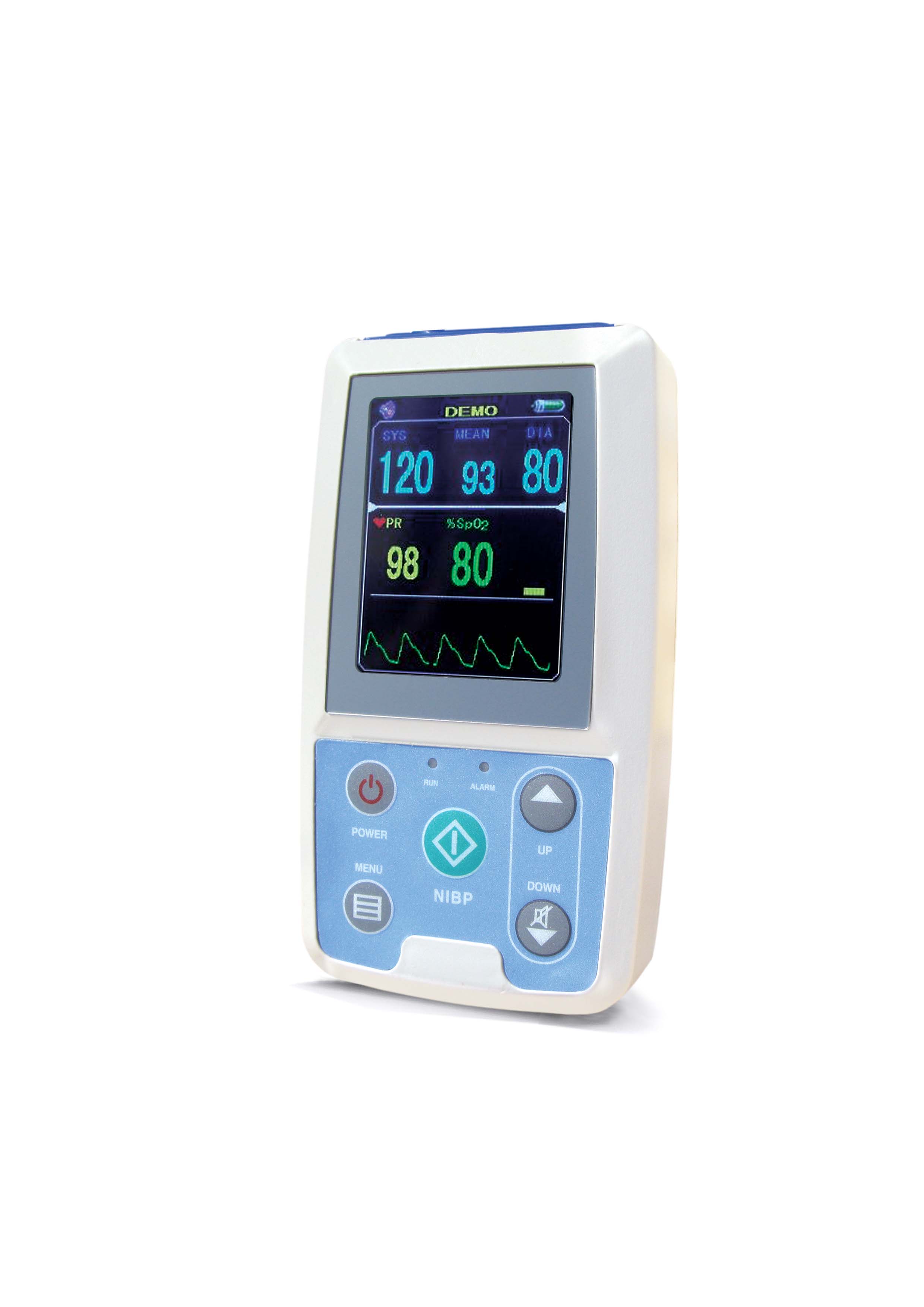
What Is ABPM (Ambulatory Blood Pressure
Monitor)
ABPM is a fully automated
technique in which multiple blood pressure (BP) measurements are taken at
regular intervals (usually every 15 to 30 minutes) over a 24–48-hour period,
providing a continuous BP record during our normal daily activities. The use of
ABPM can improve BP monitoring so that treatment can be optimized more rapidly
and achieve BP targets with appropriate therapy. ABPM may lead to better
outcomes while requiring less-intensive drug regimens to maintain BP control and
reducing costs. By more accurately and reliably measuring BP, especially
circadian changes, ABPM has been shown to predict cardiovascular morbidity and
mortality and end-organ damage. ABPM is especially beneficial for people whose
hypertension is difficult to diagnose, including the elderly, diabetic, and
individuals with resistant hypertension. ABPM is also beneficial for predicting
disease severity and prognosis among people with chronic renal disease, a
condition associated with significant cardiovascular risk. Furthermore, ABPM has
helped differentiate the 24-hour antihypertensive efficacy of antihypertensive
agents among and within differing drug classes and is also useful in drug
development for determining optimal dosing.
Why
Using ABPM?
On average, office-measured BP is higher than BP obtained with ABPM in approximately 20-50% of individuals with hypertension due to White-coat hypertension in doctor’s office. BP measurements using ABPM have been shown to be more reliable and provide a more accurate representation of the overall BP than do office-based BP measurements.
Circadian Patterns of BP Variation
BP typically follows a circadian pattern, regardless of whether you have normal BP or elevated BP. In normotensive individuals, a peak in BP usually occurs around 6 a.m., followed by a gradual decline to lower BP levels during the evening and even lower levels during the night. BP is generally lowest between 2 a.m. and 4 a.m., decreasing by approximately 13% and 17% of daytime levels for systolic and diastolic BP, respectively. The morning surge in BP may trigger cardiovascular events; therefore, it is ideal to provide 24-hour BP control to cover this surge. This is especially critical for agents that are administered once daily in the morning, as the morning surge comes at the end of the previous day's dosing interval.
The use of ABPM enables BP to be assessed throughout the circadian cycle to determine fluctuations in BP and the efficacy of antihypertensive therapy. Individuals with BP dysregulation syndrome have abnormal swings in BP after postural changes, meals, and exercise and during sleep. The use of ABPM in such individuals is vital, not only for diagnosis of the disorder but also for monitoring treatment effect.
Prognostic Benefits
In addition to its utility in establishing a diagnosis, there is substantial evidence that ABPM is superior to office-measured BP for predicting cardiovascular risk and may provide information for clinical decision-making, thereby contributing to an improved prognosis. In studies comparing the effects of office-measured BP and ABPM values on long-term prognosis, ABPM was found to predict cardiovascular outcome, especially cardiovascular mortality, with more accuracy than did office-measured BP values.
Most individuals who are either normotensive or hypertensive show a nocturnal decline in their BP during sleep ("dippers"). However, in some individuals, BP remains high during sleep ("nondippers") or is higher during sleep than during the day ("inverse dippers"). There is a substantial amount of evidence showing that nondippers have a higher risk of target organ damage than do dippers, with inverse dippers having the highest risk. Furthermore, people with diabetes are often nondippers, and diabetes is a known cause of target organ damage. Though it is difficult to determine whether nondipping is an independent predictor of target organ damage, there is more compelling evidence of a link between nondipping status and cardiovascular risk. Consequently, ABPM may be a valuable tool for measuring variation between daytime and nighttime BP to identify risk for cardiovascular complications and those who would benefit from antihypertensive therapy.
Improved Clinical Outcomes
ABPM may also lead to better clinical outcomes than office-measured BP and, possibly, home BP values. A comparative study of conventional cuff-measured BP and ABPM in people with hypertension found that adjustment of antihypertensive treatment based on ABPM instead of cuff BP led to less-intensive drug treatment, while BP and well-being were maintained.
Monitoring Therapeutic Efficacy:
By accurately assessing BP, ABPM is useful in monitoring the therapeutic efficacy of antihypertensive therapy and is frequently used in clinical trials to evaluate these agents. The role of ABPM in the ongoing management of antihypertensive drug treatment in clinical practice is not yet established, but reviews have highlighted its potential in guiding antihypertensive therapy. ABPM leads to more suitable pharmacologic intervention, effective dosing, and better feedback for physicians and patients. In addition, ABPM may enhance medication adherence by avoiding polypharmacy and unnecessary therapy.
Improved Cost-effectiveness of Hypertension Management
Studies have demonstrated greater cost-effectiveness of ABPM compared with office-measured BP values when used in the diagnosis of hypertension. A comprehensive study analyzed the cost savings when ABPM is incorporated into the process of diagnosing hypertension. The use of ABPM in the diagnosis of hypertension demonstrated a potential cost-saving benefit of 3–14% in the total cost of care and a 10–23% reduction in treatment days.
The use of ABPM in the follow-up management of patients with hypertension also appears to be cost-effective. A recent study comparing the cost-effectiveness of follow-up of patients with hypertension using ABPM or office-measured BP values found greater BP control in the ABPM group. The cost of providing good control of hypertension in one patient was approximately four times higher using office-measured BP values. In another study comparing conventional BP measurement with ABPM, potential cost savings were associated with ABPM due to a reduction in cardiovascular outcomes, such as left ventricular hypertrophy.
If you like to purchase our
very affordable ABPM or just have ABPM service, please
Call us: 1-877-299-0356
Email: ABPM@naturespiritproduct.com